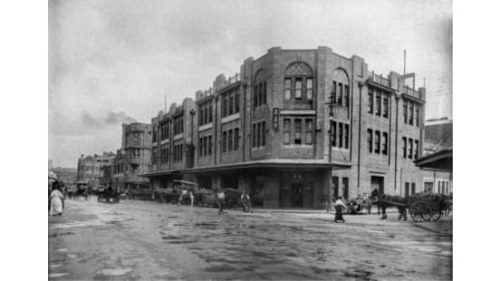Three historic buildings are slated to be heritage-listed as part of a proposal honouring the heritage of Chinatown and revitalising the area.
The City of Sydney is proposing to list 50-54 Dixon Street, 90-100 Hay Street and 75-77 Ultimo Road, all offering a unique glimpse into the history of Chinatown.
Lord Mayor of Sydney, Clover Moore AO said recognising these buildings was particularly important to local communities.
“Last year we consulted extensively on how to best revitalise our historic Chinatown precinct, and we heard clearly that preserving sites of cultural significance should underpin our work,” the Lord Mayor said.
The consultation was carried out as part of the Haymarket and Chinatown revitalisation strategy, with more than 1,150 residents, businesses, community members and heritage consultants taking part.
During this process, the properties were identified as warranting further investigation into their unique significance.
“Each of these buildings has its own story that reflects the lives and experiences of the Chinese community in Australia throughout the 20th century,” the Lord Mayor said.
“It’s wonderful to be able to recognise and share these stories and protect them for years to come.”
50-54 Dixon Street
The row of 3 attached buildings was constructed in 1916 and purpose built for local Chinese associations: Loon Fook Tong, Loong Yee Tong and Goon Yee Tong.
Community clubhouses helped to assist newly arrived immigrants settle in Australia and supported those returning to China for repatriation.
In the latter half of the 20th century, the buildings were leased to home a number of equally important organisations and commercial enterprises including the NSW Chinese Chamber of Commerce, the Tung Wah Times and the Eastern Restaurant, which was the first of its kind in the area to obtain a liquor licence until 10pm.
90-100 Hay Street
Situated opposite today’s Paddy’s Market, these buildings were constructed as the Municipal Stores in 1911. The 6 attached buildings, separated by Kimber Lane, were used to store popular goods sold at the markets, including tobacco, fireworks, fruit and vegetables.
The humble banana had particular significance for the wholesalers operating out of the building. In the early 1900s, the Immigration Restriction Act 1901 and the White Australia policy placed heavy restrictions on Chinese wholesalers involved in the produce industry.
To circumvent this, wholesalers trading on the site pivoted to become commission agents, ensuring the ongoing survival of their businesses.
The buildings were later home to popular eateries and other hospitality venues, including the Emperor’s Garden restaurant and bakery established by Stanley Yee in 1979, still owned and operated by the same family today.
Kuo Min Tang building, 75-77 Ultimo Road
Since 1922, 75-77 Ultimo Road has been home to the Chinese Nationalist Party of Australasia (Kuo Min Tang or KMT) headquarters.
The Chinese Nationalist party was founded in August 1912 by Sun Yat-sen and has been active in Australia for more than a century.
It raised funds to support the effort during the Sino-Japanese War and was one of the first political organisations to invite women as members.
Sharing space with the Chinese Times newspaper from 1922 to 1949, its members organised dragon balls, the biggest and most anticipated events on the Sydney Chinese social calendar.
The organisation continues to occupy the building and lease the ground floor shopfront to the Chinese Ginsengs and Herbs Corporation, the first store of its kind in Sydney’s Chinatown.
Following endorsement of the proposal by Council, the heritage listing for the 3 buildings will go to the NSW Government for review. Once approved, the proposal will be open for public feedback.
For media enquiries, contact Nicky Breen.
Phone 0436 599 861 or email nbreen@cityofsydney.nsw.gov.au
For interviews with Clover Moore AO, Lord Mayor of Sydney contact Zoe Delamare.
Phone 0477 263 615 or email zdelamare@cityofsydney.nsw.
For more stories, visit City of Sydney News
Restrictions: The City of Sydney provides access to this publicly distributed image for editorial purposes only and remains the copyright owner. No archiving, commercial use or third party distribution is permitted without prior written consent. When using content for editorial purposes, you must include the following image credit adjacent to the content: “Photographer’s Name / City of Sydney”

















